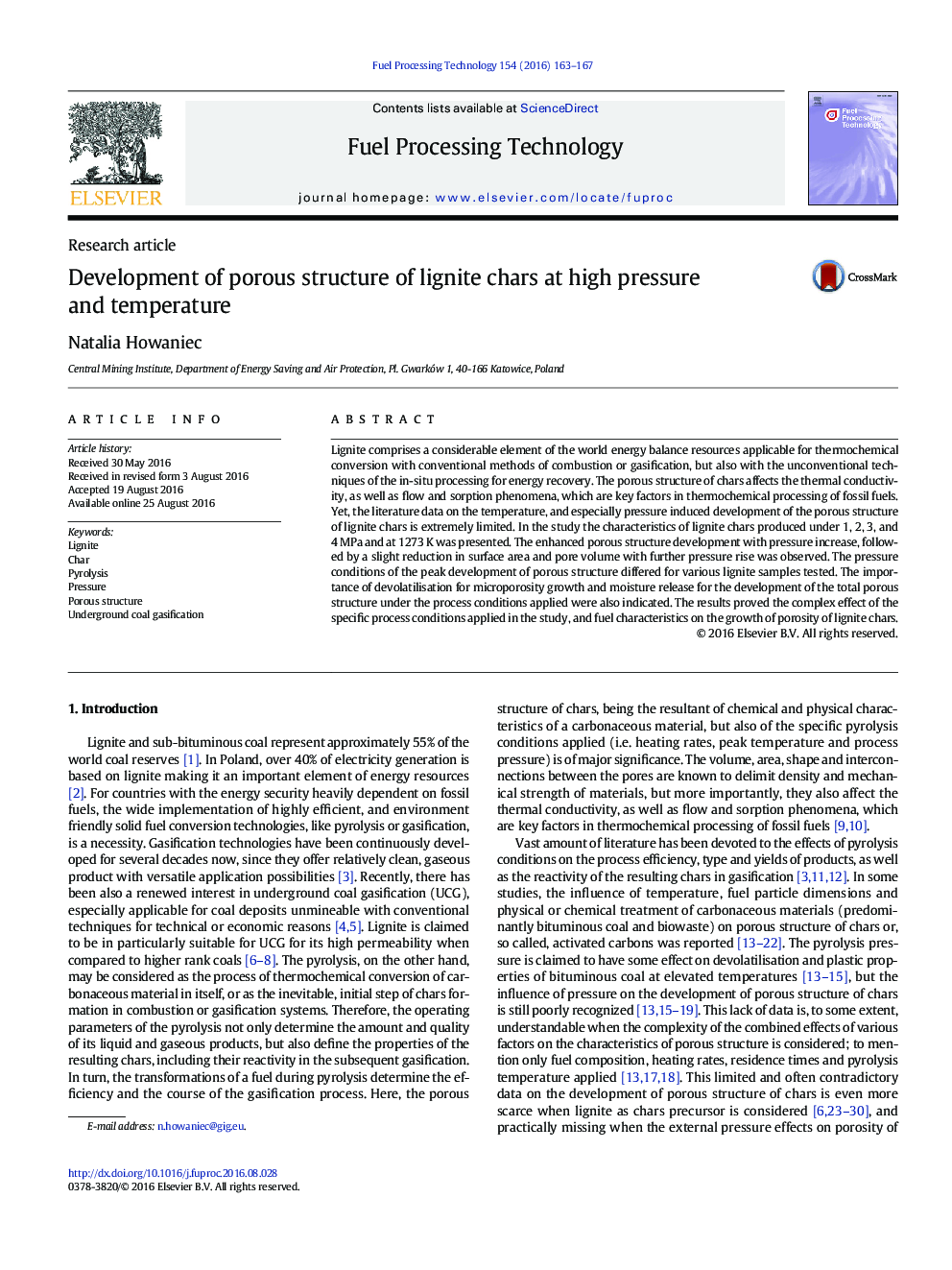| Article ID | Journal | Published Year | Pages | File Type |
|---|---|---|---|---|
| 4769000 | Fuel Processing Technology | 2016 | 5 Pages |
Abstract
Lignite comprises a considerable element of the world energy balance resources applicable for thermochemical conversion with conventional methods of combustion or gasification, but also with the unconventional techniques of the in-situ processing for energy recovery. The porous structure of chars affects the thermal conductivity, as well as flow and sorption phenomena, which are key factors in thermochemical processing of fossil fuels. Yet, the literature data on the temperature, and especially pressure induced development of the porous structure of lignite chars is extremely limited. In the study the characteristics of lignite chars produced under 1, 2, 3, and 4Â MPa and at 1273Â K was presented. The enhanced porous structure development with pressure increase, followed by a slight reduction in surface area and pore volume with further pressure rise was observed. The pressure conditions of the peak development of porous structure differed for various lignite samples tested. The importance of devolatilisation for microporosity growth and moisture release for the development of the total porous structure under the process conditions applied were also indicated. The results proved the complex effect of the specific process conditions applied in the study, and fuel characteristics on the growth of porosity of lignite chars.
Related Topics
Physical Sciences and Engineering
Chemical Engineering
Chemical Engineering (General)
Authors
Natalia Howaniec,
